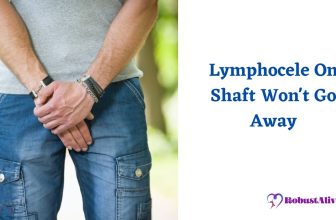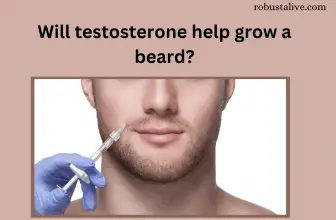Testosterone Replacement Therapy: The 6 Best Testosterone therapies
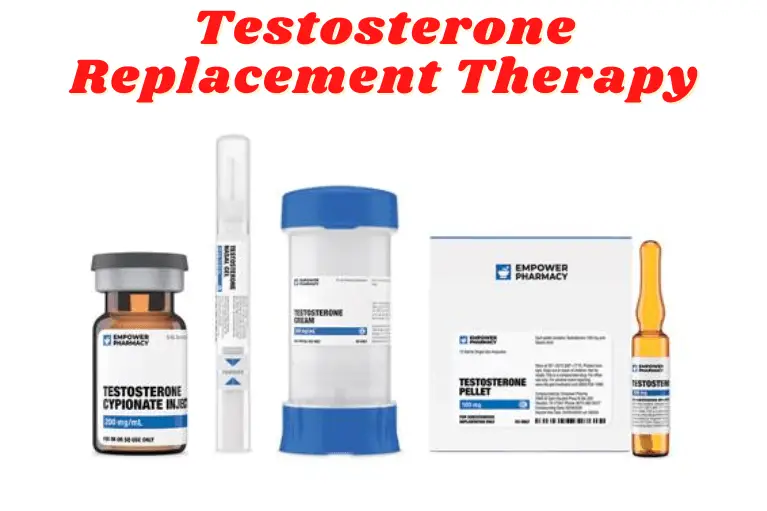
When it comes to male menopause, the first thing that guys seek out is testosterone supplements. But if life is a video game, testosterone replacement therapy (TRT) is the cheat code! And here, we will talk about the six types of testosterone replacement therapy on the market that are far more effective than testosterone supplements and male enhancements and the pros and cons of each option.
1. Testosterone Injections

It is the first type of testosterone replacement therapy approved by the FDA that induces testosterone into the body in its purest form. This TRT works by injecting testosterone under your skin or muscle. Men can choose to self-administer the testosterone injections at home or get it done by a healthcare professional. Some common types of testosterone injections are Aveed, Depo-Testosterone and Xyosted.
Pros and cons of Testosterone Injections
- Available in several different strengths.
- Ready-to-use testosterone auto-injectors can be used at home.
- One vial provides more than one dose.
- Fewer clinic visits and pharmacy trips.
- Unlike gels, there isn’t any risk of accidental skin-to-skin exposure.
- Available only as an injection.
- The injection site might bleed or cause redness.
- Some brands contain sesame oil which might cause an allergic reaction.
- At-home injectors carry the risk of addiction and misuse.
- Requires regular monitoring of testosterone levels.
2. Bio-identical hormone therapy (BHRT)
Guys, menopause is not only among women. Men also suffer from hormone imbalance, and male menopause is this condition’s colloquial term. Bio-identical hormone therapy is an effective treatment option for those who want to achieve an optimum hormonal balance.
Plus, this TRT comes with the best anti-ageing effect and is known to reduce age-associated testosterone declining. That is why BHRT is the most common option among middle-aged men who want to restore optimum hormone levels or stop the symptoms of ageing.
That said, the benefits of bioidentical hormone therapy for men are many. It helps build a lean body, increases sexual desire, improves bone density and helps maintain a healthy weight.
Pros and Cons of Bioidentical Therapy
- A safer alternative to testosterone injections and implanted testosterone pellets
- Prevents age-associated decline of testosterone level.
- Several brands of FDA-approved bioidentical hormone brands are available.
- There are many different types of Bioidentical hormone treatment (topical, oral and injection)
- The medications used for BHRT are not always covered by insurance.
- It can take several weeks to feel the effects.
3. Testosterone Patches
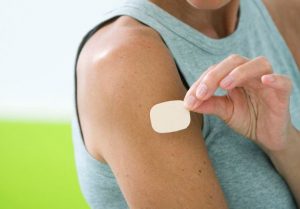
If your body doesn’t produce enough testosterone, there are patches for that. These patches are like the evolution of steroids and are designed to be applied on the skin (on the stomach, upper arms, back or thighs).
Only with this option do you not only get the benefits (increased confidence), you don’t take the costs (potential side effects). What more? These days, testosterone patches are also marketed as a male enhancement product partly because the patches work by adding sex hormones to the body.
But it’s not like if you testosterone patches on your cheek, girls would sit on your face, though. Andoderm is the most common brand os testoserone patch. And, no matter how many testosterone patches you wear, if your hairline is receding, then your hairline is receding, and no, you aren’t supposed to wear them on hairy areas. But yes, it can help bring your testosterone levels to a normal and healthy level.
Pros and Cons of Testosterone Patches
- The easiest type of testosterone replacement therapy since it requires applying to the skin.
- Works well for increasing testosterone.
- Comes in convenient packets and tubes.
- Requires applying only once a day.
- Less expensive compared to other therapies.
- You’ve to wait 3 hours before taking a shower, bathing or swimming.
- High chances of causing skin-to-skin testosterone transfer, which can be risky for children and pregnant women.
- Chances of skin irritation.
- Each brand requires a different procedure of application and lasts 24 hours.
4. Testosterone Gels
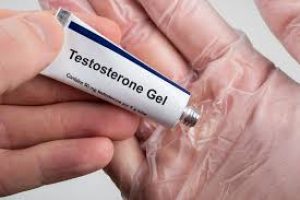
Like testosterone patches, gels are to be applied directly to the skin. These gels are formulated with pure testosterone that gets absorbed into your body. Some common brands are Testim, Vogelxo, AndroGel and Fortesta.
Generally, all forms of TRT can raise the risk of heart conditions. But if you want to lower the risks of cardiovascular complications, studies have found that testosterone gel is safer than other types of testosterone treatments.
Pros and Cons of Testosterone Gels
- An easy type of testosterone replacement therapy since it requires applying to the skin.
- Requires applying only once a day.
- Comes in a convenient pouch, tubes and packets.
- Low risk of cardiovascular complications compared to other forms.
- An affordable and less costly option as it is available in several low-cost generic forms.
- You’ve to wait hours before taking a shower, bathing or swimming.
- Can cause testosterone exposure to people, pets and children through skin-to-skin contact.
- High risk of causing accidental testosterone exposure to other people.
5. Testosterone Pump (Nasal Gels)
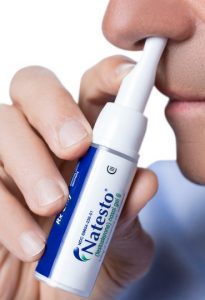
Using nasal gel is also another type of testosterone therapy involving a pump that induces testosterone into the nostril. Natesto is a common brand.
It is an expensive TRT but quite an effective option to increase natural sex or to achieve a healthy level of testosterone. The typical dose is administrating the nasal gel pump thrice a day.
Pros and Cons of Nasal Testosterone Gel
- Super-fast acting; testosterone reaches/absorbs under the skin for under 40 minutes.
- Lower risk of accidental testosterone exposure in children.
- Doesn’t drip.
- Compared to testosterone injections, it can be quickly administered.
- Requires administering into the nose, which might not be preferable to some.
- Requires using thrice a day.
- Not safe nor suitable if you have sinus.
- Only one brand of medication is available, and hence it is quite expensive.
6. Testosterone Pellet (Implants)
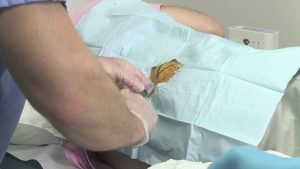
Testosterone pellet is a simple but highly effective therapy involving pellets that are to be implemented under the skin. Your provider will make a small incision/cut in a fatty area and implant the testosterone pellets. These pellets release testosterone in your body over the course of three to six months.
Testosterone implants is a long-acting therapy, and the results of this treatment last 6 months. The most common brand of testosterone pellets is Testopel. It is also a very convenient testosterone replacement therapy. But the only downside is the pellets are to be injected and removed by a practitioner. That means it will require a clinic visit (2 to 4 times a year) for each dose of this TRT.
Pros and Cons of Testosterone Pellet
- It is an FDA-approved testosterone treatment.
- Provides a long-time effect.
- Results of each dose last 3-6 months.
- Takes only 15 minutes.
- No risk of testosterone exposure to others.
- This TRT has only one brand of medication on the market.
- Requires surgical procedure.
- Risk of infection.
- Compared to other forms, it is an expensive treatment.
Wrapping Up
From testosterone injections to patches, gels, and implants, we covered it all! But we didn’t stop there –- based on your questions and concerns, we also discussed the proper way to administer each type of TRT. We hope that you found this knowledge about Testosterone Replacement Therapy helpful in making the decision on which therapy would work best. Chances are, once you decide to go for testosterone therapies, it will probably become a long-term commitment. And knowing the pros and cons of each type of TRT can help if you find the right route.
The 12 Common Questions Of Testosterone Replacement Therapy Answered
-
What is testosterone replacement therapy?
Testosterone replacement therapy (TRT) is a medical treatment in which the natural levels of testosterone are replaced after a sudden decrease or deficiency of the hormone. TRT can be used to treat both male and female patients with hypogonadism conditions.
-
Is testosterone therapy safe for everyone?
Testosterone replacement therapy (TRT) is not safe for people with a high risk of prostate or breast cancer. Doctors do not recommend TRT to patients who have heart failure, severe sleep apnea or urinary tract symptoms. The therapy might also contradict those who have hematocrit higher than 50%.
-
How often should you use testosterone injections?
Each type of testosterone injection is formulated to work for a certain period of time. Hence, it depends on the brand. That said, Xyosted is one of the most common brands. It is also the easiest type of auto testosterone injector, requiring injection only once a week. If you are prescribed to use Aveed, you need the injection every 10 weeks after the first two doses.
-
When is the right time to swim or bathe after using testosterone patches?
Getting in contact with water or taking a swim or shower just after using the patches can reduce the amount of testosterone your body will absorb. After using a testosterone patch, it is recommended to avoid swimming or showering for at least 3 hours.
-
Does FDA approve testosterone pills?
There are certain FDA-approved testosterone pills that you can get over-the-counter. Some of them are Methitest, Jatenzo, Tlando.
-
Do testosterone patches cause infertility?
All types of testosterone therapy can lower the chance of having a baby. Testosterone patches are used to raise the level of testosterone and can hinder sperm count. This, in turn, can affect men’s ability to have a baby. If you plan to have a baby, it is best to avoid using higher doses and talk with your provider.
-
Can testosterone gel cause excessive body hair?
Exposure to testosterone gels can cause excessive facial and body hair. Physicians wear gloves when applying the gel to their male patients. Most importantly, it can develop manly features in an unborn child if a pregnant woman bearing comes in contact with it.
-
Can you use nasal testosterone gel if you have sinusitis?
It is not recommended to use nasal gel lie Natesto testosterone if you have sinus. If you have any nasal condition, it is best to choose another form of treatment. Also, using the gel with an over-the-counter nasal spray other than Afrin is not recommended.
-
What are some popular testosterone replacement medications?
Androgel, Testim, Vogelxo, Fortesa and Depo-Testosterone are the most commonly prescribed brands of testosterone replacement medications.
-
What are the risks of testosterone medications?
Men who are willing to have more children must be cautious of the adverse effects of testosterone medications. Testosterone medications can cause testicular failure and infertility. Some other side effects are:
- Acne
- Reduced sperm production
- Urinary retention
- Alopecia
- Gynecomastia
- Worsening sleep apnea
- Warning of the growth of prostate cancer
- Breast cancer
-
What type of lab tests are performed for evaluating the right testosterone therapy?
Even if your symptoms and signs match with low testosterone, your doc might often state otherwise. They will give you tests and fasting labs, and it is very common to hear them say, “it was fine.” But did you know that certain medications can skew testosterone lab results? These include antidepressants like Effexor or Lexapro and meds like Provigil and others.
Doctors evaluate testosterone by looking at the following lab tests:
- Luteinizing hormone (L.H.):H. is a hormone that stimulates testosterone production. Lack of this hormone causes low testosterone.
- Follicle-stimulating hormone (F.S.H.):S.H. stimulates the production of spermatic fluid. Lack of F.S.H. causes male infertility.
- Total testosterone: Total testosterone is the free test and S.H.B.G. hormone. The normal range of total testosterone is 800 – 1200 ng/dl.
Some other lab tests are:
- Sex hormone binding globulin (S.H.B.G.)
- insulin-like growth factor 1 (IGF -1)
- Dehydro Epin Andotestosterone (DHEA-SO4)
- TSH/FT4/FT3
- Cortisol
- Prostate Specific Antigen (P.S.A.)
- complete blood count (C.B.C.)
- Complete metabolic panel (C.M.P.)
There are several factors that might cause low testosterone. It might be due to pituitary or testicular damage and so many reasons. Physicians do the above tests to understand the root cause and provide the proper treatment.
-
Do cholesterol-lowering medications cause low testosterone?
The hormone testosterone is also made from cholesterol. That’s why taking cholesterol-lowering medicines can decrease testosterone.



